
The Eyecatch: Hayao Miyazaki’s The Boy and the Heron & Masayuki Yoshihara’s Komada, Frieren #06, Overtake! & More
By popular demand, we’re starting a new column for shorter commentary on animated works and their craft, as well as news and general industry happenings. To open things up: parallels between Hayao Miyazaki and Masayuki Yoshihara’s new films, the quiet theming amidst the bombast of Frieren #06, and much more!
The SakugaSakuga (作画): Technically drawing pictures but more specifically animation. Western fans have long since appropriated the word to refer to instances of particularly good animation, in the same way that a subset of Japanese fans do. Pretty integral to our sites' brand. Blog launched 7 years ago to complement Sakugabooru’s attempt to archive not just the animation that resonates with us, but also some information about its authorship, which is always prone to slipping through the fingers of history. The idea was to expand that into a more holistic analysis of animation, examining its intersections with storytelling and labor to explain why we love the things we love, and hopefully clarify misunderstandings about the job of the people involved along the way. We did that through essays, news articles, staff interviews, you name it—fundamentally, nothing has changed in that regard.
What is now very different, though, is the way we try to convey that, as well as the discourse around these topics in a broader way. It’s not exactly a secret that we shifted from lighter, more frequent writeups about singular topics to very lengthy articles that, even when focused on one specific title, end up weaving together everything from labor circumstances to artistic currents. For as much work as those take, that isn’t going to change, because if anything this feels more necessary than ever. Discussion about sakugaSakuga (作画): Technically drawing pictures but more specifically animation. Western fans have long since appropriated the word to refer to instances of particularly good animation, in the same way that a subset of Japanese fans do. Pretty integral to our sites' brand. has blown up in popularity over recent years, but it also has become quick to reduce itself to screaming about names for their own sake, as if the animators who happen to work on your favorite seasonal show were a gacha pull; it’s degrading, uninformative, and just emotionally hollow. Though we’re not so deluded to think we’re putting out life-changing writeups, nor that we’re the only ones trying to connect all these dots, it still feels like the right direction for the site.
And yet, I can personally say that I felt that we were missing something by letting things get to the current extreme where few titles get discussed at all; can’t forget that one of the founding principles of Sakugabooru was to give due respect to moments of brilliance even in titles that were otherwise unassuming if not a bit of a disaster. I stand by our decision to drop regular seasonal previews, because there are only so many times one can say that most titles will be compromised due to collapsing schedules, but that also did limit the variety of titles discussed over here. Given that quite a few supporters of the site have expressed that they would like something akin to their lighter commentary back, and that we did also feel there was room for it, this is the solution we’ve settled on: The Eyecatch, a column for more casual commentary on works we’ve recently seen—be it current releases or not—as well as our feelings on recent news. And what better way to inaugurate it with than an overly long intro that defeats the point these cool things we’ve got some feelings about.
Hayao Miyazaki’s The Boy and the Heron And Masayuki Yoshihara’s Komada – A Whisky Family
Thanks to the Sitges Film Festival, I recently had a chance to catch two new feature films by critically acclaimed anime directors. Hayao Miyazaki’s The Boy and the Heron and Masayuki Yoshihara’s Komada: A Whisky Family are two films you’re not likely to see contrasted; the renown of the main creators behind them is leagues apart, and on a surface level, they appear to be entirely different types of films. And yet, they share something fundamental: they’re stories told by great veterans in their fields, both in conversation with future generations, with familial obligations, as well as with their own legacy. And in both cases, I think people are also better off approaching them with the right expectations.
I will spare you a thorough dissection of The Boy and the Heron, not only because I’m fond of the amusing secrecy Ghibli took with it, but also because a writeup like that is quickly approaching anyway; perhaps in a few weeks, as regular screenings start happening in more countries. What I already feel is worth saying, though, is that it’s a movie where the metatextual context bursts through the allegorical zone into the actual, tangible plot. Mind you, Miyazaki hasn’t lost the ability to submerge the audience into a world of fantasy that feels credible in every aspect, yet so spontaneous and full of wonder at every corner. The Boy and the Heron lands with such confidence you immediately feel that it’s familiar, authentic, but still so unique. Amusingly, it’s that beginning set in the real world that has the most magical energy.
As the movie progresses, though, Miyazaki’s own figure ends up occupying the screen, in a way that makes me feel that it might break the immersion of people looking for precisely that. To some degree, it did for me, but what I got was a fascinating self-reflection that feels like it continues the arc you could foresee from The Wind Rises; although, since it’s been so long since that last release, it feels like Miyazaki has gone through multiple films worth of evolution. If you want the hands of creators to remain invisible, this might not be the movie for you. If you’ve been enamored with Miyazaki’s seamless immersion, it won’t leave you starving, but may eventually get in the way of your meal. But if you’re at all interested in how an era-defining creator can keep shifting the lens inwards without losing his essence, boy do I have the heron for you.
On a similar note, I think Komada deserves a warning—you probably should not approach it as “the next work by the director of Uchouten Kazoku/The Eccentric Family”. It’s not just that Tomohiko Morimi’s writing is inseparable from the flavor of that series, but also that Yoshihara’s interpretation of it is key to its excellence, and this time he’s working with a more conventional script. In place of that whimsical magical realism, we have a down-to-earth story about the specificities of making whisky. And hovering above it, a feel-good tale about the way life places almost all of us away from the dreams we may have had at some point, but that it can be within our power to channel that original passion from the spot we ended up in. To the eyes of other people, in particular younger ones, it may look like anyone who’s already making that effort was blessed from the start—an amusing cycle of slow realizations that everyone fakes it till they make it. Some writing choices are inelegant, but its heart is in the right place.
Before watching the movie, I was able to listen to P.A. Works founder and president Kenji Horikawa; whom I hope enjoyed the trip enough to make up for the licensor that brought him over repeatedly calling him by the wrong name. Horikawa emphasized that his studio was founded effectively in the middle of nowhere—apologies to the prefecture of Toyama—alongside Komada’s director Yoshihara, without a real animation team alongside them. 23 years later, they’ve grown a fairly reputable anime studio around them, and in the process haven’t really lost that desire to build something. And to accomplish that, one must do it with younger generations.
As Horikawa put it, “In an industry that is all about flashy action scenarios, we want to tell stories that deal with the issues youngsters will encounter in their everyday lives”. The movie doesn’t have the acting chops to make that resonate on a deeper level, but arguably the most noticeable aspect of its craft is the spaciousness—or deliberate crampedness—of its layoutsLayouts (レイアウト): The drawings where animation is actually born; they expand the usually simple visual ideas from the storyboard into the actual skeleton of animation, detailing both the work of the key animator and the background artists.. If you want to capture the conflicts those young people encounter in their jobs, first you have to depict the physical spaces where they happen, and then also have the ability to twist their framing so that it matches the tone. For a movie with somewhat limited animation, what it accomplishes in that regard is remarkable.
None of this is actually news, of course. Not P.A. Works’ tendency to tell these stories, best exemplified by the Working Series pseudo-franchise that includes not just this new film but also the likes of Shirobako and Hanasaku Iroha. Not their remote physical location, nor their (successful or not) attempts to marry those themes with the process of raising their own animation teams from the ground up. By hearing Horikawa underline those points so specifically beforehand, though, I did get a clearer taste of those well-meaning feelings behind this movie. And given how much emphasis they put on it, it almost feels like I got a taste of the whisky too.
Overtake!
As things stand, Overtake! is the current seasonal anime I’m most likely to dedicate a full write-up to, besides the already ongoing coverage of Frieren. It leans itself particularly well to being examined as a representation of the shifting culture at studio Troyca; after all, it’s a 10th anniversary project that embodies what has endured since those early days—represented through obvious, Aldnoah-flavored staffing choices—but also how their dedication to titles like Idolish 7 has affected what they make, and who it is for. In case it doesn’t betray the strengths it has shown early on, but also as long as production fatigue doesn’t get in the way of their expression, this could be a lovely series and a good fit for our site—despite not featuring the type of flashy animation that gets lots of attention.
Leaving aside those what ifs, though, no one can take away the fact that the first few episodes of Overtake! are compelling and very elegantly written, in a way that synergizes with the house style established by director Ei Aoki. The series opens up with a photographer who has lost the ability to film people, tormented by the regrets of an incident that is neatly alluded to rather than unceremoniously dumped on the viewer; we can infer that he took a photo from someone who was drowning rather than rushing to help, that he was harassed online for it, and as episodes pass, the show organically reveals more juicy details like the fact that this guilt likely led to his divorce. Overtake is the type of work that has confidence not just in itself, but also in the viewer, who should be able to piece together all of this even if it’s not fully spelled out. By the end of the broadcast, it surely will be, but the natural delivery on the way there is bound to make it so much more satisfying.
A big reason why that restraint works is that Aoki, as well as pupils of his like Makoto Kato, embrace a directorial style that is all about quirky visual compositions in service of very straightforward, but because of that fundamentally sound storyboarding. Even in works where they let themselves go and double down on the funky visual concepts—many such cases—those still tend to be deployed with a clear idea to convey behind them; and in a series with such solid writing and that contagious penchant for restraint, we’re seeing one of their most confident exercises in storytelling. It’s one thing to have an impressive premiere, and another one to be able to follow it up with a beautifully lit second episode that retroactively makes that preceding one hit harder, as it lets you infer how much that trauma was weighing on him. Even the third one, more modest in its delivery, keeps that same spirit in assuming you’ll understand his hesitation to take over a commercial shoot—trauma doesn’t simply disappear in one night, even for an impulsive individual. All of this, while preserving some flashes of characterful acting. So far, good stuff!
Frieren #06
Speaking of seasonals, here is the one we’ve already dug our teeth into. Although Frieren has been a gorgeous, very clearly high-profile effort since the start, episode #06 has stood out in particular because of the way it flaunts the resources that Yuichiro Fukushi and Takashi Nakame have put at the team’s disposal. It’s supported by the type of superstar contributors that your average animation nerd would salivate over, and much of their energy is channeled into bombastic action, which is also the quickest—which is not to say lesser—way to earn recognition for the craft. So of course, what I want to talk about isn’t the aspect that made it go viral; not contrarianism, I swear. Instead, it’s time to return to the understated yet still omnipresent theme of time.
When talking about the conclusion to Fern’s introductory arc, I said that a trial where a child has to pierce through stone was a nice summary of the entire series’ thesis. After all, this is a story about an elf with a near-endless lifespan. Compared to fleeting human lives, her own being is like that of a rock that is eroded all the same, but at a pace that individuals unlike her can’t even appreciate. And yet, that analogy fails to consider the most important variable: interpersonal relationships and shared experiences are an incredible accelerator of that process of leaving marks behind. The titular character’s mistake when it comes to considering the passage of time isn’t really that her scale is way off, though that’s the source of fun gags, but rather that she attempts to judge it in absolute, uncaring numerical terms. That simply doesn’t compute for Stark, a coward who may have “only” spent 3 years in this village, but is still willing to give his life for them. And it’s of course not true for Frieren herself, for whom a mere 10 years with her previous party was a life-changing experience.
And so, in the same way that Fern managing to blast away that rock during her training nicely represented how much that period with both of her masters meant, we start with another chapter about such physical marks. Motivated by his appreciation of the townsfolk who welcomed him, Stark has been cutting away an entire chunk of a mountain; maybe they do have a point about parties needing the firepower of a warrior after all. His hands, which are also used to convey the resolve and fear he shares with his master, also sport physical marks in the way they’re wounded all over from that training—something Fern brings attention to as representative of his love and dedication. Even his larger scar, inflicted by his master in a moment of fear, can stand for the inevitable painful experiences of sharing your life with others; ones that, despite their lasting effects, don’t make you regret that you were with them. Frieren is at its best when it connects those themes with striking visuals, and that’s something it can pull off even in an episode where the main draw is beating the hell out of a dragon.
And beat the hell out of the dragon he does.
Again—that action does kick ass, so we’ll eventually have to go back to it and talk about how a production led by a director who doesn’t really enjoy that type of bombastic content can excel at it anyway. It’ll also be worth circling back to the attentive acting in the second half of the episode, supervised by someone who not that long ago may have considered quitting animation altogether due to a real-life tragedy. Before we dedicate another lengthy writeup to Frieren with all that and more, though, it felt worth it to highlight that there was more to episode #06 than some crazy cool fighting.
16bit Sensation: Another Layer
While extraordinary productions like Frieren give us countless opportunities to talk about them, I really have to take my chances with something like 16bit Sensation. The appearance of one Kou Yoshinari wasn’t exactly a surprise; although people often forget that due to their small size and his living legend status, he is a member of Studio Silver, the company behind this production. What makes this more meaningful, though, is that he’s kind of the perfect avatar to embody the protagonist’s nostalgia and craving for wildly ambitious eroge of the past.
The series is rooted in authentic experiences developing such games across the 90s and into a more modern era, as TWGOK’s Tamiki Wakaki enlisted veterans like Misato Mitsumi and Tatsuki Amaduyu to share their know-how. The anime, which adds an extra wrinkle to it with an original story that sends a nostalgic zoomer into the past, can play with time in a bit of a looser way—but still, capturing the spirit of an era is a major draw. From the technicality in the creative process that the show strongly emphasizes, to details like the casual smoking at the office, it feels like it encapsulates a specific period. And, while it’s kind of a broader amalgamation, the game that its protagonist dreams of against current trends couldn’t find a better representation than that Aninari sequence; after all, he’d animated some of the fanciest intros in the entire genre space, and notoriously lent similar work to an absurdly ambitious effort like the Muvluv franchise.
For as on-point as that feels, though, I can’t say the same about the Aniplex propaganda all over the first episode. The modern scenes being covered in ads for their IPs does make sense, given that it’s a story about someone who is upset that the shift towards such safer anime and phone games has asphyxiated the companies that used to make ambitious eroge. Their presentation, though, doesn’t really match her feelings. This is especially true when it comes to her own room being filled with merch for those Aniplex titles, despite the text noting that she’s fed up with them; and for as hypocritical as otaku can be, I don’t think underlining that is the intent. In contrast with the perfectly fitting Aninari sequence, or the ending he shares with Akio Watanabe, it does feel like a case of a creative team really getting a project, unlike the people who paid for it. Quite common!
Hirogaru Sky Precure, Kibou no Chikara, and Yuu Yoshiyama
Speaking of titles I won’t always get the chance to highlight: Yuu Yoshiyama’s recent 1-2 punch across Precure as a franchise has been tremendous; and in truth, maybe more of a 1-2-3, as Yoshiyama was also in charge of Cure Butterfly and Dream kicking ass in the recently released All Stars F movie. Before people outside Japan get to enjoy that, though, we got another reminder that Yoshiyama has become synonymous with the moments of raw coolness in this current era of Precure. In the same way that the elastic forms of Tatsuo Yamada were the sign that things were going down in Precure’s early days, and just like artists such as Hironori Tanaka, Naotoshi Shida, Nishiki Itaoka, or Shingo Fujii have represented, your body immediately tenses up when you see those distinct poses.
Yoshiyama hasn’t monopolized the franchise in the same way as some of those predecessors, being a very sought-after freelancer rather than a dedicated ace, but still has managed to claim these specific moments of sharpness; usually starring the cool, older magical girls, making no attempt to hide personal preferences. Capping it off Hirogaru Sky Precure #37 with adlib-heavy animation for an emotional goodbye was also a nice touch: Butterfly has always been at her best when animated by Yoshiyama, which means that she was also giving it her all to bid goodbye to her student.
After acing an episode about the older magical girl in the group, Yoshiyama moved to… the Precure spinoff that has aged up entire casts. Despite its generally low production values—modern NHK-e anime in a nutshell—Kibou no Chikara: Otona Precure 23 has been a great showcase of commitment. “What if magical girls grew old” is a question that could find simple answers, and amusing scenes like watching them get drunk could be surface-level fanservice if that was all there is to Kibou no Chikara. And yet, there is so much more. Much thought went into how to translate the original Yes! Precure 5’s themes to a story that isn’t about kids dreaming of the future, but young adults worrying about whether they’re really on the right track. It has considered how to manifest that in tangible, relatable ways; never thought I’d watch a main Precure character face thinly veiled workplace sexism, but here we are. And the reason it wants to capture things like that is that, like Doremi’s revival movie, it’s aware that its original audience has grown up and is looking for something that can resonate with their current struggles rather than just copying the show they once liked.
I don’t know where the series is heading quite yet, but in the face of those bitter struggles, I do know what is incredibly satisfying: Yoshiyama animating Nozomi as she reverts into her younger Cure Dream form and goes on an absolute rampage. Although I share some people’s wish that they’d gotten an adult magical girl form, I knew that was never really in the cards; the show might find a way to thematically conclude something along the lines of it’s fine to retain some of your past, but that’d simply be a justification to hold onto the recognizable, marketable designs. If this is the price to pay for such a thought-out sequel and to get ruthless Yoshiyama animation, though, carry on!
Recent Promotional Videos And Such News
- Quite excited about the reveal of Dragon Ball Daima—perhaps just as much as Akira Toriyama himself, given how personally involved he is with this project for a change. And seeing what he immediately pointed out upon the announcement, it seems like it’s similar reasons that have us both giddy: the return to a child body for Goku (and everyone else this time) makes for an opportunity to bring back his pole, other tools, and generally the type of amusing fight choreography that power scalation in the franchise eventually made irrelevant. I’m happy about the direction it has taken aesthetically, a coherent one given the team behind it, but more than anything else I’m excited for Dragon Ball potentially rediscovering something that used to be one of its greatest aspects.
- Dungeon Meshi is coming! And with 2 cours at that! Yoshihiro Miyajima is a director we’ve talked about at length in our coverage of the Gridman franchise, and in this case his fastidiousness might be a great asset not just to evoke horror vibes, but also in the depiction of the food—two things that can then be contrasted with the explosion of energy you can almost take for granted in a Trigger production. More than anything else, I wanted to point out that this has been getting animated for quite a long time already, so people shouldn’t worry about the announcement of its scope potentially wrecking the production. 2 cours feel like the right amount to get a great taste of its cooking without having to commit to way too much either—though if it ends up being successful, I wouldn’t be surprised in the least if someone pushed for a full adaptation eventually.
- Speaking of things that have been in the process of animation for a while, Masahiro Ando and studio BONES’ adaptation of Time Patrol Bon was finally unveiled! We’d correctly assumed that the project Ando had been preparing for a long time was a Netflix deal, due to the fact that so much had already been completed before anything was publicly announced. After expecting a reveal at one of the events held by the distributor, though, we got blindsided by this reveal at a Fujiko-related event instead. So after all that wait, we got… a PV that doesn’t really represent the show’s aesthetic as much as it shows 10GAUGE doing 10GAUGE things. A curious promotional cycle for a show that looks like a lot of fun.
- More upcoming BONES anime in Metallic Rouge, which has been getting some new commercials as of late. We do know it has a sense of humor, and that its action may be larger scale than expected, but I still don’t know what to expect from it—something I consider a big positive. Yutaka Izubuchi will build an intricate world behind it no matter what, but depending on what is emphasized, it could range from a fun buddy cop & toku hybrid to something with loftier expectations and a more allegorical side to it. I would sign up for either, or a combination of those.
- It’s rude, to me, that I can’t watch Totto-chan yet.
And that’s it for the first entry of The Eyecatch! Don’t ask me why our brief analysis column is starting with another long article, but at least we did cover a variety of topics as intended. Next time, we might touch on other seasonal stuff worthy of note; the shifting dynamics of Spy x Family, Undead Unluck‘s SHAFT heritage, Kusuriya finally making its debut, certain titles with a troubled production but amazing highlights that I should finally catch up with, and who knows what else; or rather, you may know what else, if you’re aware of the other titles I’ve been watching or shown interest for. That does of course include non-seasonal titles, which I imagine will take over this as current productions sadly dry up. Either way, see you next time!
Support us on Patreon to help us reach our new goal to sustain the animation archive at Sakugabooru, SakugaSakuga (作画): Technically drawing pictures but more specifically animation. Western fans have long since appropriated the word to refer to instances of particularly good animation, in the same way that a subset of Japanese fans do. Pretty integral to our sites' brand. Video on Youtube, as well as this SakugaSakuga (作画): Technically drawing pictures but more specifically animation. Western fans have long since appropriated the word to refer to instances of particularly good animation, in the same way that a subset of Japanese fans do. Pretty integral to our sites' brand. Blog. Thanks to everyone who’s helped out so far!
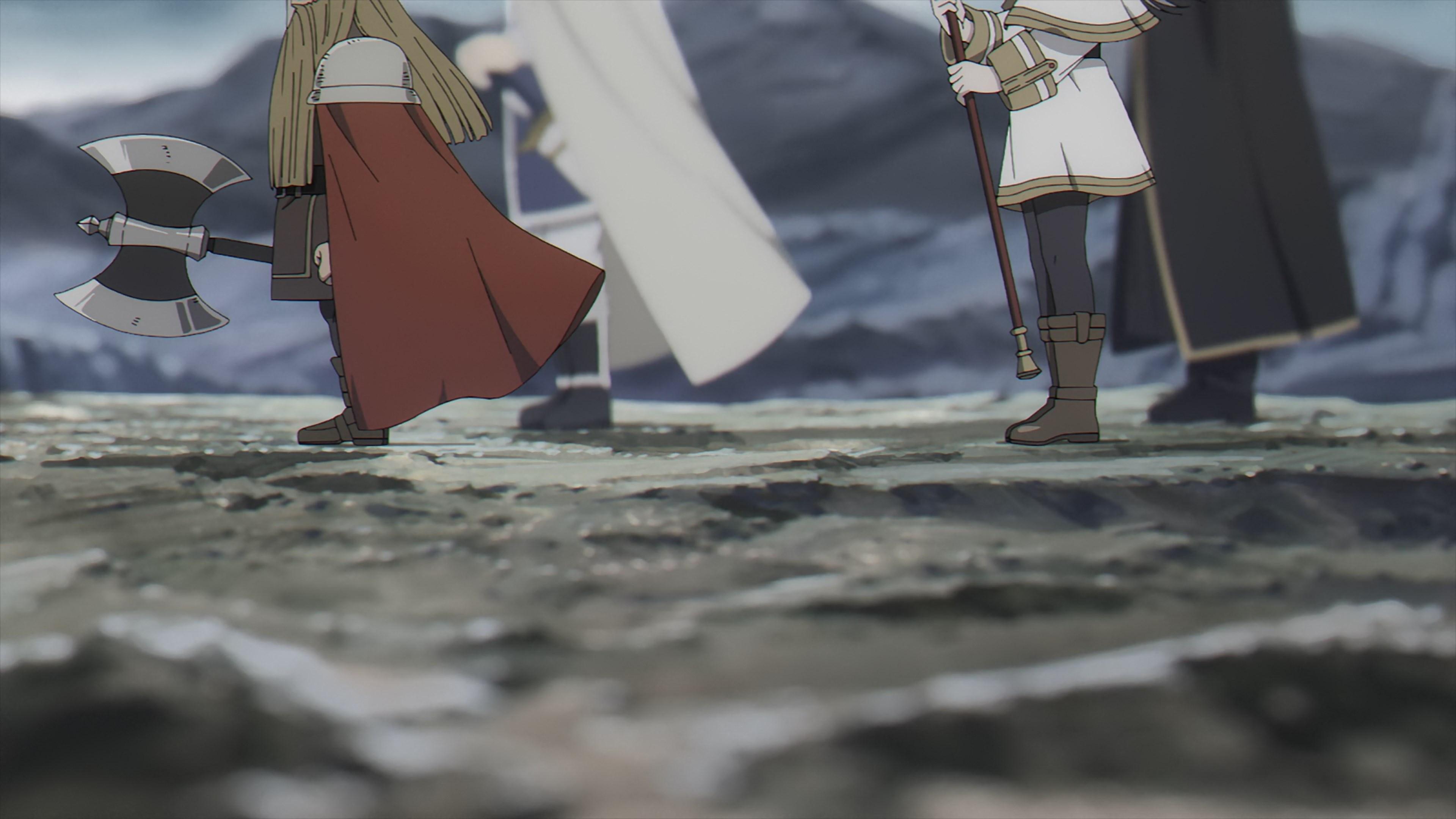
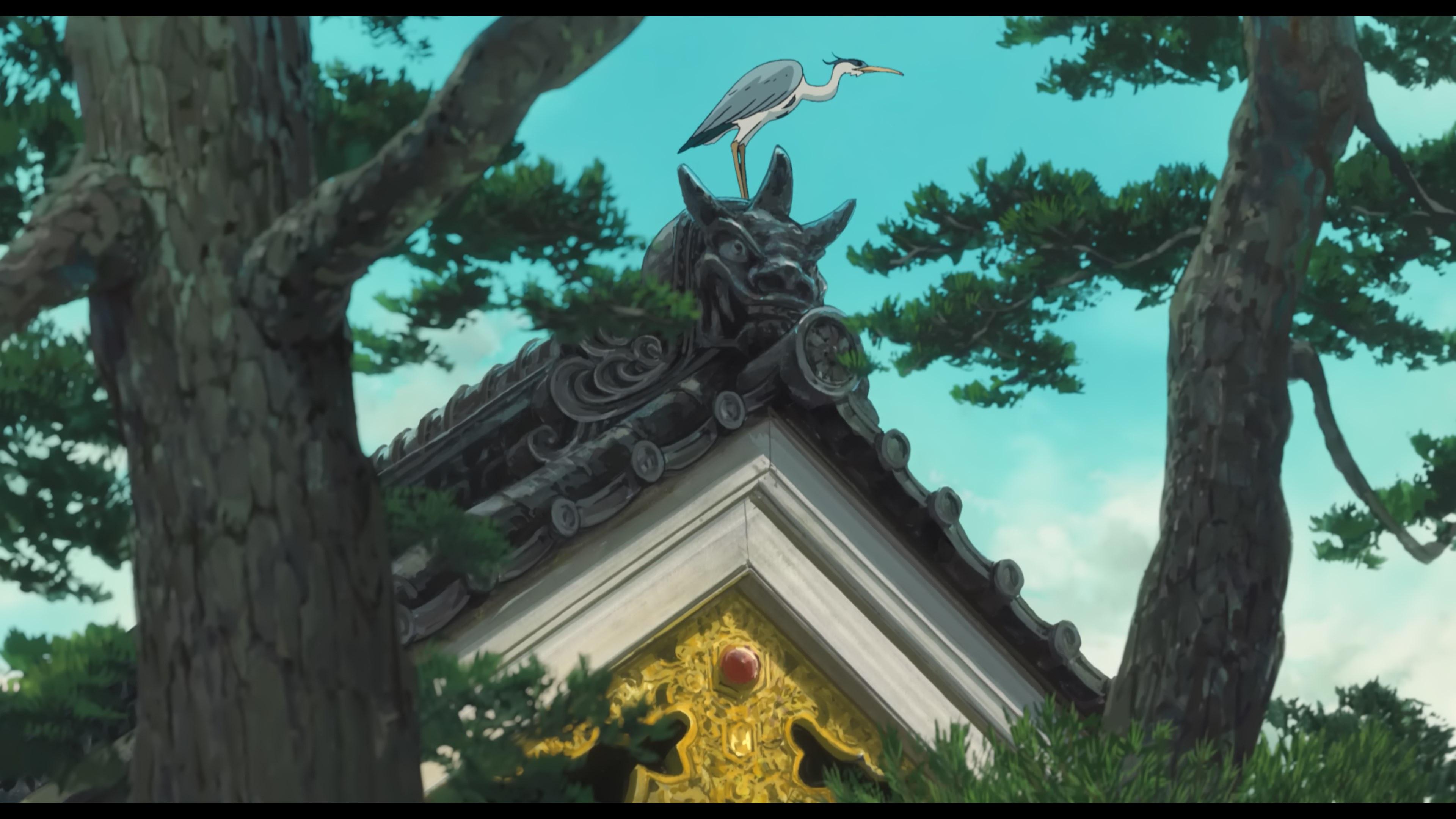
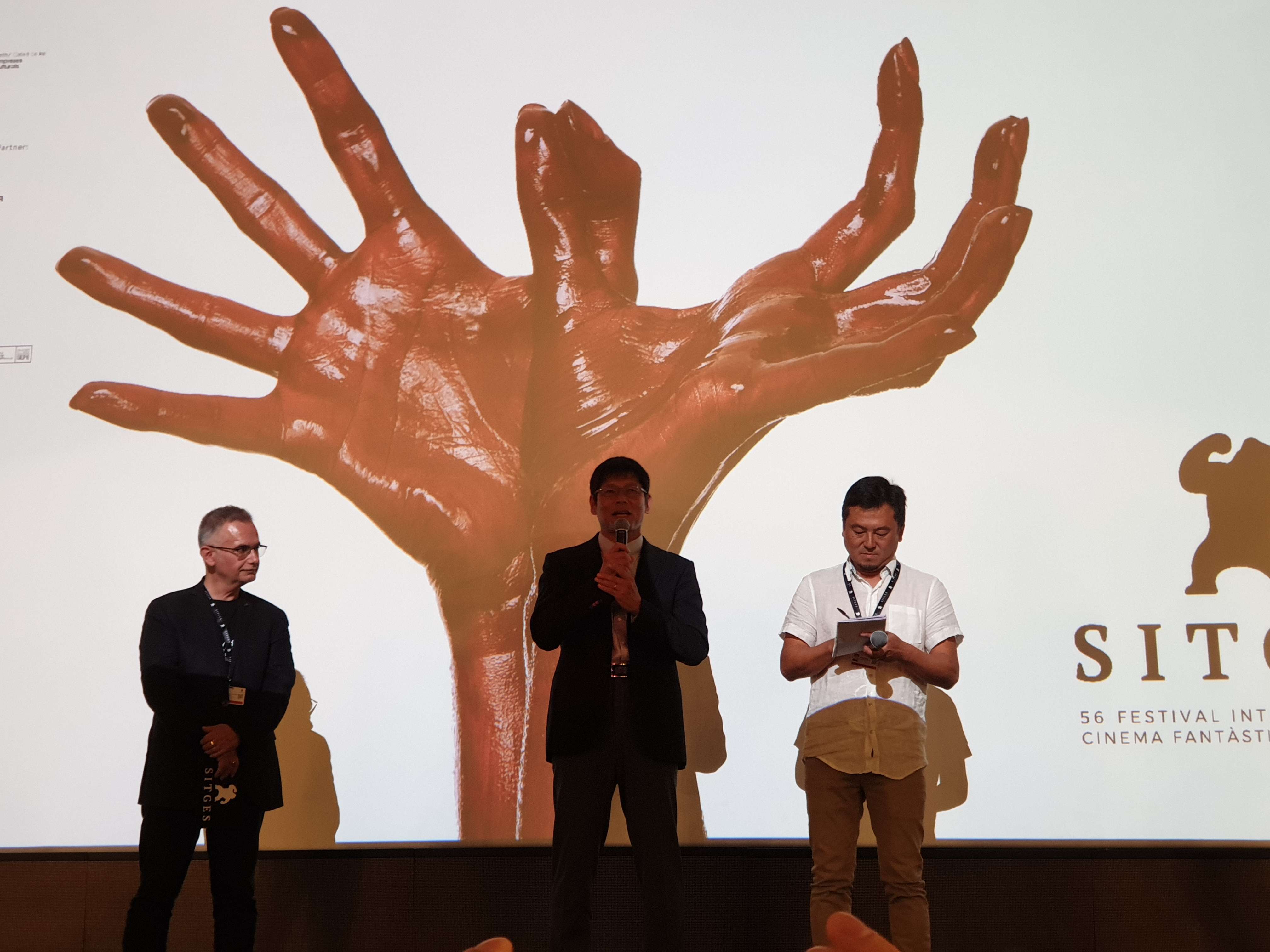
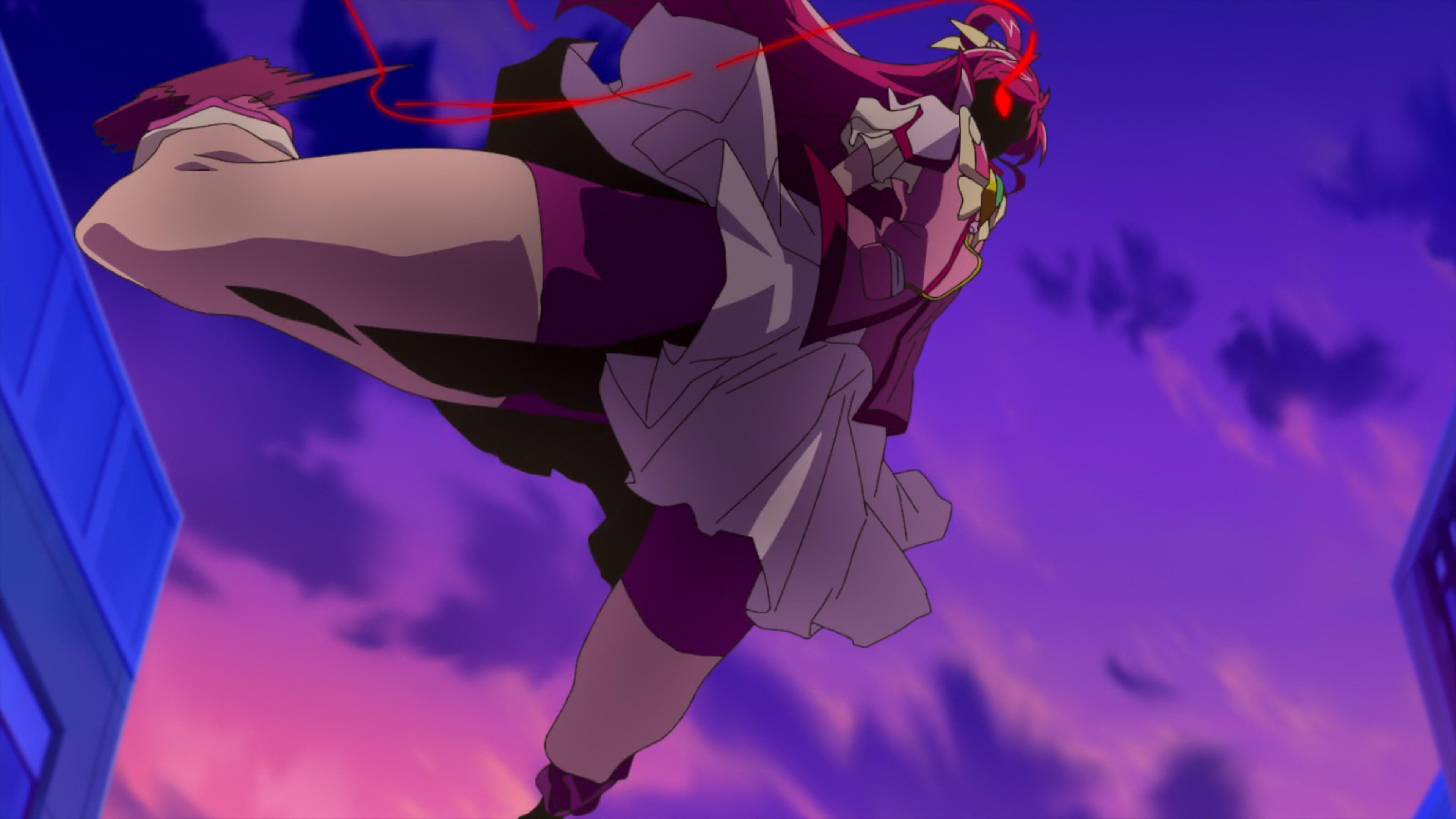
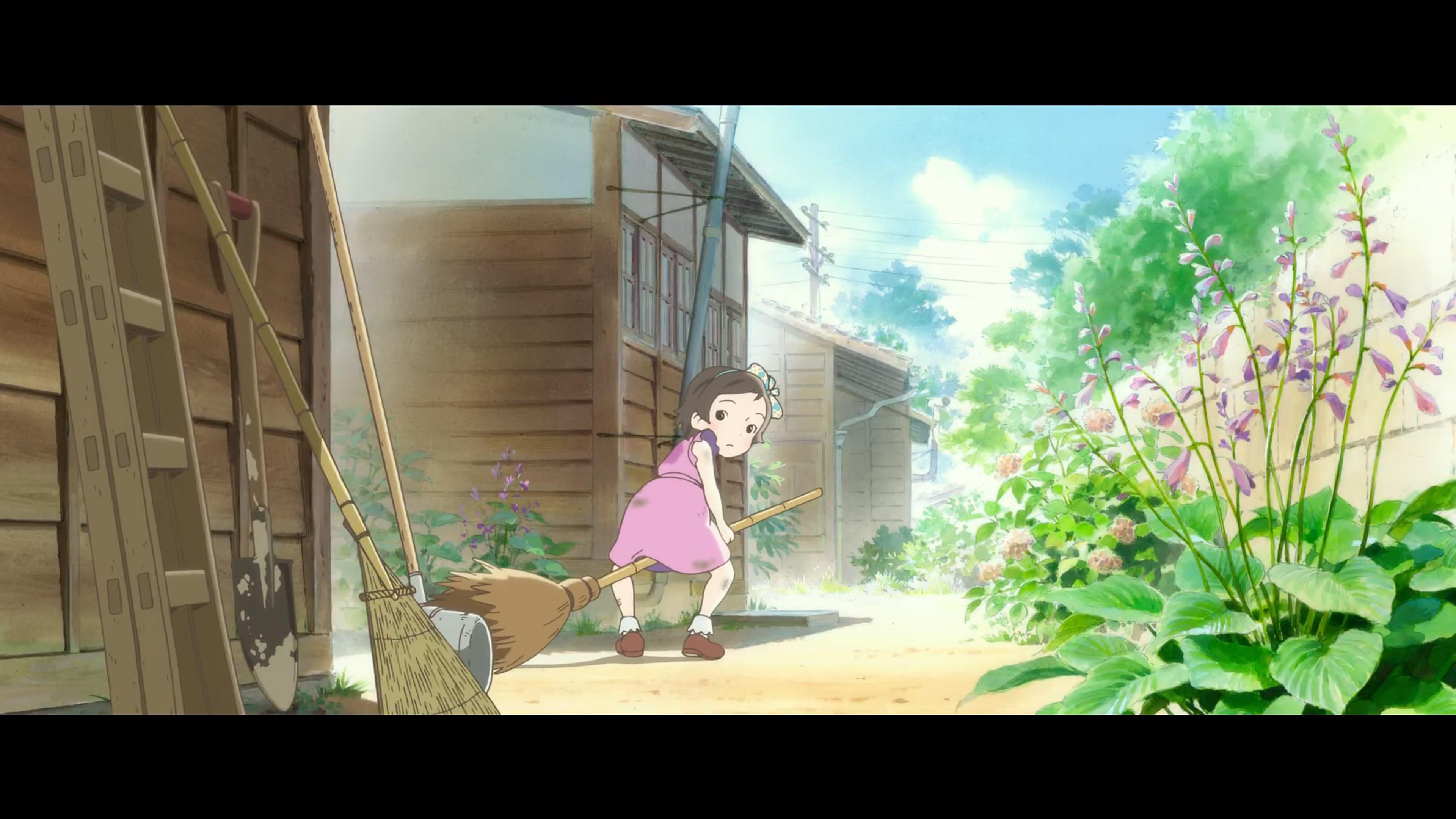
The biggest question I have regarding Frieren’s production is how Takashi Nakanome got involved here, and how much he is really contributing to the all-star team gathered compared to Fukushi. From what I could find, he was a production assistant on Berserk, Garden of Words, Mirai, and even Production Desk on Your Name.
On Twitter, he confirmed that he’s acting in freelance capacity (not common for AniP, but many things about Frieren aren’t common) and that he was approached by Satoki Toyoda and Fukushi himself. As you noticed, he has a bunch of theatrical animation experience, which is one of his greatest assets here – with Fukushi as the main AniP (and essentially a producer-level responsibility according to him), he’s able to suggest artists on a smaller, more pointed scale, and then reach out to them even if they’re normally unavailable theatrical folks. He spoke about approaching Ayako Hata, and even though he… Read more »
Loving the new format!
Could you shed some light on what on earth is going on with Uzumaki’s production? Is there any chance we actually see it air this year, or was demarco’s announcement just for tradition’s sake at this point?
I could be holding it in my hands and I still wouldn’t know whether it’s real for sure.
(Also I don’t know, only heard about it ages ago already from someone who’s not worked on it anymore as far as I know. I’d still expect it in 2024 at least though.)
First thoughts:
Second thoughts:
Wait, Hayao Miyazaki finished his movie?!
Did you know that if you add up multiple short (by our standards anyway) comments you may end up with a rather long (by any standards, frankly) piece? I didn’t, until this, where I learned a lesson.
(But really, these should be shorter moving forward, without the mandatory intro and maybe with less of an accumulated backup. If something starts as a segment of this column and ends up growing larger than expected, like it happened with those movie parallels, I’ll try to just separate it into a regular article of its own.)
Love the new format! Such an informative read!! Will it be possible for you to share your thoughts on the second season of Jujutsu Kaisen? I wasn’t a huge fan of the first one but the series directorial debut of Mr. Shota Goshozono has absolutely floored me. The Hidden Inventory arc/Gojo’s Past arc was such a beautifully renditioned adaptation of the source material in my opinion but, even though Mappa have managed to assemble a stellar team, there have been some obvious chinks in the armor since Shibuya arc has started airing. I don’t know nearly enough about animation, let… Read more »
Wrote an entire, very long separate piece about it! Was going to be a corner in one of these but it grew too big for this.